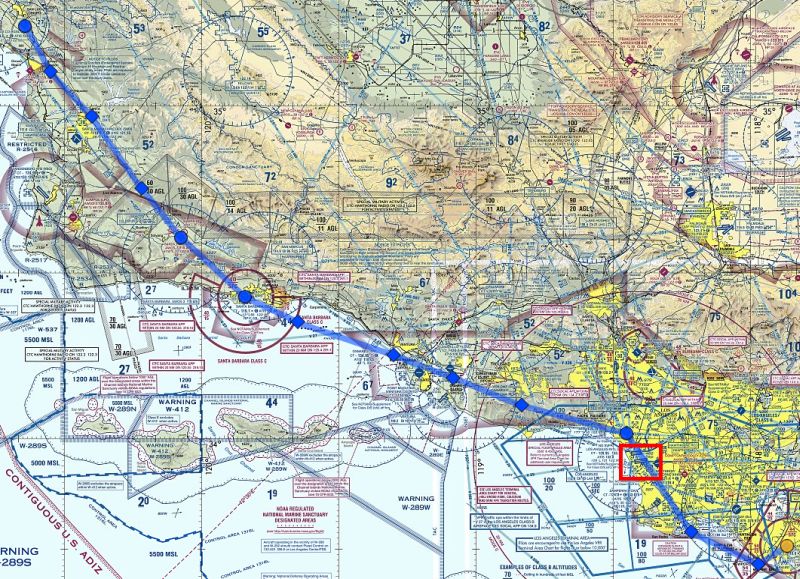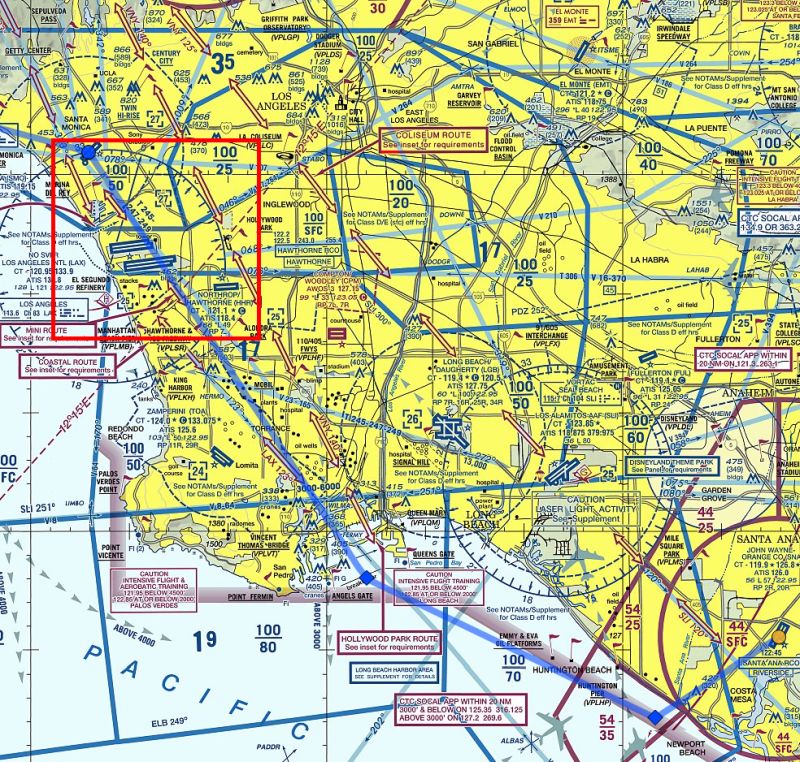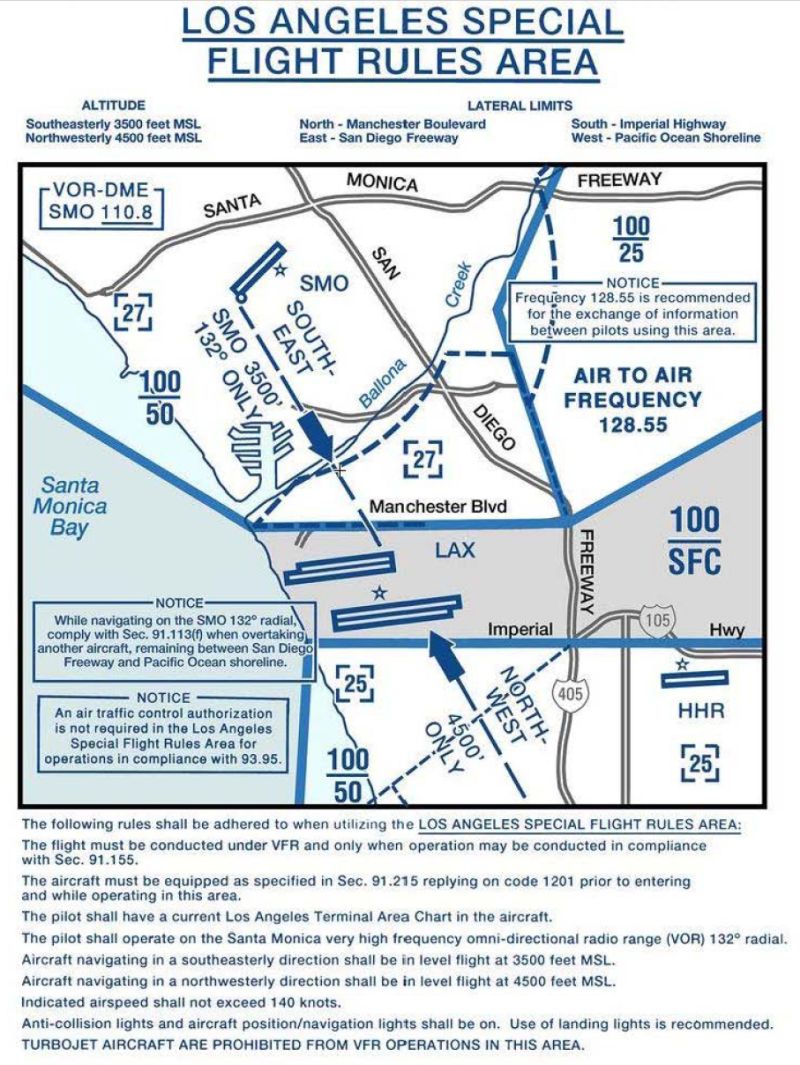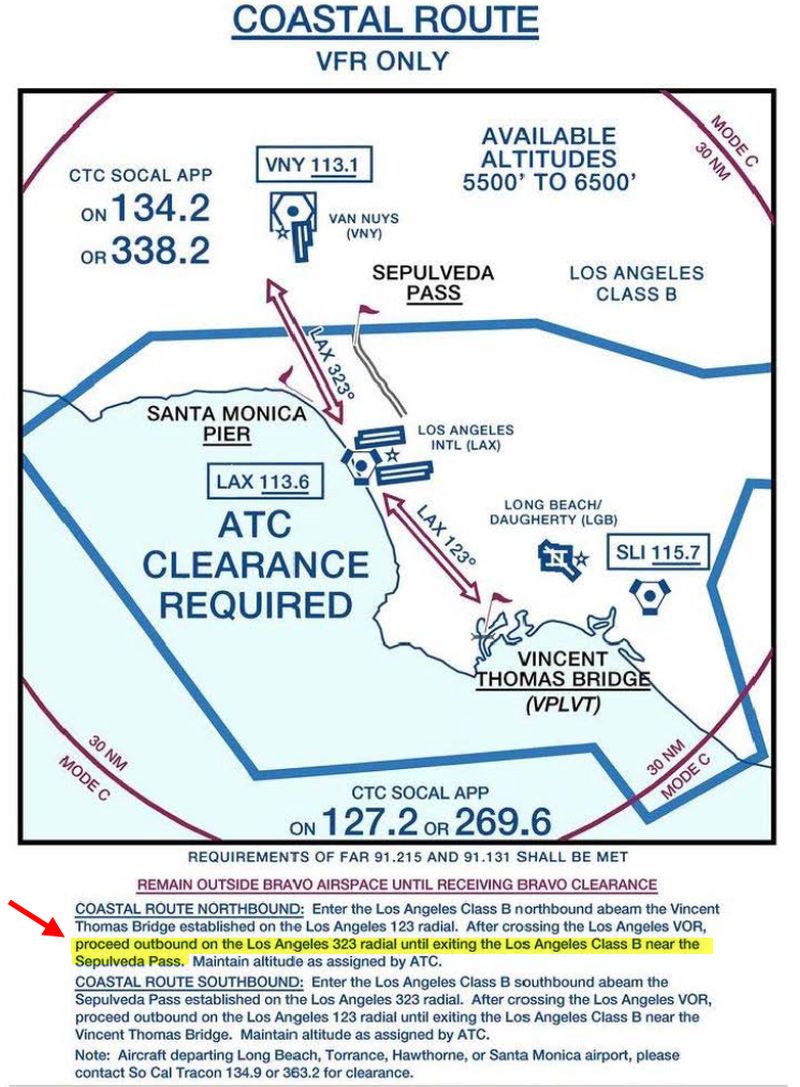eetrojan
Pattern Altitude
I'm going to fly from John Wayne (KSNA) to San Luis Obispo (KBSP) to visit my son at Cal Poly. I'm planning to use the “Special Flight Rules Area” to fly northwesterly through the LAX bravo at 4500 AGL (see below), and then head up along the coast.
Oddly, I've flown several other transitions where I stay with ATC (mini route, coliseum route, etc.), but never the SFRA. I could just wing it, but figured I may as well ask...
If I'm on flight following with SoCal Approach:
1. When will SoCal dump me to squawk 1201?
2. Does SoCal give me a frequency to resume flight following on the north side of LAX, or do I need to contact SoCal on the frequency show on the TAC (124.6) when desired when I choose to north of LAX?
Thanks!



Oddly, I've flown several other transitions where I stay with ATC (mini route, coliseum route, etc.), but never the SFRA. I could just wing it, but figured I may as well ask...
If I'm on flight following with SoCal Approach:
1. When will SoCal dump me to squawk 1201?
2. Does SoCal give me a frequency to resume flight following on the north side of LAX, or do I need to contact SoCal on the frequency show on the TAC (124.6) when desired when I choose to north of LAX?
Thanks!





